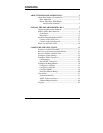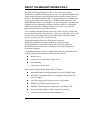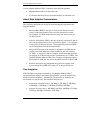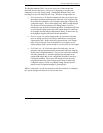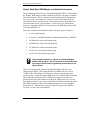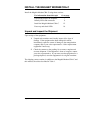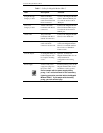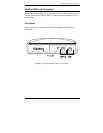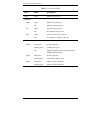
About the Megabit Modem CRA-C
4 Megabit Modem CRA-C User Manual
Reach, Data Rate, SNR Margin, and Noise Environment
The maximum transmission rate of the Megabit Modem CRA-C is determined
by distance, SNR margin, and the condition of the line (wire gauge, condition
noise environment). Figure 1 shows the relationship between reach and data
rate for a given set of conditions. The plots can be used to determine the
achievable reach at a given data rate, or they may be used to determined the
achievable data rates at a given distance. In all of the cases except the no
noise case, a margin of 6 dB was allocated above the SNR that provides a Bit
Error Rate (BER) of 10
-7
.
These line conditions fall within the range of the plots shown in Figure 1:
•
no noise (0 dB margin)
•
low noise (−140 dBm-Hz Additive White Gaussian Noise (AWGN))
•
24 ISDN lines in the same binder group
•
24 HDSL lines in the same binder group
•
24 ADSL lines in the same binder group
•
10 T1 lines in an adjacent binder group
•
one T1 line in the same binder group
The performance shown is "typical" for PairGain Megabit
Modem CRA products. Due to variations in environment and
test setup, PairGain does not guarantee performance to the
figures shown.
One of the configuration options in the Megabit Modem CRA-C is the
startup margin setting. This setting defaults to 6 dB but may be set from
-3 dB to 9 dB. The modems will attempt to come up at the programmed
margin setting. Setting the margin high allows for a cushion against changing
line conditions and impulse noise. Setting the margin low provides less
protection but allows the modems to come up at a higher data rate (if in the
rate-adaptive modes) or at a longer loop length (if in the fixed data rate mode).
The default setting of 6 dB is recommended and provides an overall BER
better than 10
-10
. Reducing the setting to 0 dB will only provide a BER of
less than 10
-7
and is not recommended.






